- Home
- Arthur C. Clarke
2001: A Space Odyssey (Arthur C. Clarke Collection: The Odyssey) Page 12
2001: A Space Odyssey (Arthur C. Clarke Collection: The Odyssey) Read online
Page 12
“I’m sorry,” Hal replied. “I assumed you knew that the AE-35 unit was on the antenna mounting.”
“I probably did, a year ago. But there are eight thousand subsystems aboard. Anyway, it looks a straightforward job. We only have to unlock a panel and put in a new unit.”
“That suits me fine,” said Poole, who was the crew member designated for routine extravehicular activity. “I could do with a change of scenery. Nothing personal, of course.”
“Let’s see if Mission Control agrees,” said Bowman. He sat still for a few seconds, marshaling his thoughts, then started to dictate a message.
“Mission Control, this is X-ray-Delta-One. At two-zero-four-five, on-board fault prediction center in our niner-triple-zero computer showed Alpha-Echo three-five unit as probable failure within seventy-two hours. Request check your telemetry monitoring and suggest you review unit in your ship systems simulator. Also, confirm your approval our plan to go EVA and replace Alpha-Echo three-five unit prior to failure. Mission Control, this is X-ray-Delta-One, two-one-zero-three transmission concluded.”
Through years of practice, Bowman could switch at a moment’s notice to this jargon—which someone had once christened “Technish”—and back again to normal speech, without clashing his mental gears. Now there was nothing to do but to wait for the confirmation, which would take at least two hours as the signals made the round trip past the orbits of Jupiter and Mars.
It came while Bowman was trying, without much success, to beat Hal at one of the geometrical pattern games stored in his memory.
“X-ray-Delta-One, this is Mission Control, acknowledging your two-one-zero-three. We are reviewing telemetric information on your mission simulator and will advise.
“Roger your plan to go EVA and replace Alpha-Echo three-five unit prior to possible failure. We are working on test procedures for you to apply to faulty unit.”
The serious business having been completed, the Mission Controller reverted to normal English.
“Sorry you fellows are having a bit of trouble, and we don’t want to add to your woes. But if it’s convenient to you prior to EVA, we have a request from Public Information. Could you do a brief recording for general release, outlining the situation and explaining just what the AE-35 does. Make it as reassuring as you can. We could do it, of course—but it will be much more convincing in your words. Hope this won’t interfere too badly with your social life. X-ray-Delta-One, this is Mission Control, two-one-five-five, transmission concluded.”
Bowman could not help smiling at the request. There were times when Earth showed a curious insensitivity and lack of tact. “Make it reassuring,” indeed!
When Poole joined him at the end of his sleep period, they spent ten minutes composing and polishing the reply. In the early stages of the mission, there had been countless requests from all the news media for interviews, discussions—almost anything that they cared to say. But as the weeks drifted uneventfully past, and the time lag increased from a few minutes to over an hour, interest had gradually slackened. Since the excitement of the Jupiter fly-by, over a month ago, they had made only three or four tapes for general release.
“Mission Control, this is X-ray-Delta-One. Here is your press statement.
“Earlier today, a minor technical problem occurred. Our HAL-9000 computer predicted the failure of the AE-35 unit.
“This is a small but vital component of the communication system. It keeps our main antenna aimed at Earth to within a few thousandths of a degree. This accuracy is required, since at our present distance of more than seven hundred million miles, Earth is only a rather faint star, and our very narrow radio beam could easily miss it.
“The antenna is kept constantly tracking Earth by motors controlled from the central computer. But those motors get their instructions via the AE-35 unit. You might compare it to a nerve center in the body, which translates the brain’s instructions to the muscles of a limb. If the nerve fails to pass on the correct signals, the limb becomes useless. In our case, a breakdown of the AE-35 unit could mean that the antenna will start pointing at random. This was a common trouble with the deep-space probes of the last century. They often reached other planets, then failed to send back any information because their antenna couldn’t locate Earth.
“We don’t know the nature of the fault yet, but the situation is not at all serious, and there is no need for alarm. We have two back-up AE-35s, each of which has an operational life expectancy of twenty years, so the chance that a second will fail during the course of this mission is negligible. Also, if we can diagnose the present trouble, we may be able to repair the number one unit.
“Frank Poole, who is specially qualified for this type of work, will go outside the ship and replace the faulty unit with the backup. At the same time, he’ll take the opportunity of checking the hull and repairing some micropunctures that have been too small to merit a special EVA.
“Apart from this minor problem, the mission is still going uneventfully and should continue in the same manner.
“Mission Control, this is X-ray-Delta-One, two-one-zero-four, transmission concluded.”
CHAPTER 22
Excursion
Discovery’s extravehicular capsules or “space pods” were spheres about nine feet in diameter, and the operator sat behind a bay window which gave him a splendid view. The main rocket drive produced an acceleration of one-fifth of a gravity—just sufficient to hover on the Moon—while small attitude-control nozzles allowed for steering. From an area immediately beneath the bay window sprouted two sets of articulated metal arms or “waldoes,” one for heavy duty, the other for delicate manipulation. There was also an extensible turret carrying a variety of power tools, such as screwdrivers, jackhammers, saws, and drills.
Space pods were not the most elegant means of transport devised by man, but they were absolutely essential for construction and maintenance work in vacuum. They were usually christened with feminine names, perhaps in recognition of the fact that their personalities were sometimes slightly unpredictable. Discovery’s trio were Anna, Betty, and Clara.
Once he had put on his personal pressure suit—his last line of defense—and climbed inside the pod, Poole spent ten minutes carefully checking the controls. He burped the steering jets, flexed the waldoes, reconfirmed oxygen, fuel, power reserve. Then, when he was completely satisfied, he spoke to Hal over the radio circuit. Though Bowman was standing by on the control deck, he would not interfere unless there was some obvious mistake or malfunction.
“This is Betty. Start pumping sequence.”
“Pumping sequence started,” repeated Hal. At once, Poole could hear the throbbing of the pumps as precious air was sucked out of the lock chamber. Presently, the thin metal of the pod’s external shell made crinkling, crackling noises, then, after about five minutes, Hal reported:
“Pumping sequence concluded.”
Poole made a final check of his tiny instrument panel. Everything was perfectly normal.
“Open outer door,” he ordered.
Again Hal repeated his instructions; at any stage, Poole had only to call “Hold!” and the computer would stop the sequence immediately.
Ahead, the walls of the ship slid apart. Poole felt the pod rock briefly as the last thin traces of air rushed into space. Then he was looking out at the stars—and, as it happened, at the tiny, golden disk of Saturn, still four hundred million miles away.
“Commence pod ejection.”
Very slowly, the rail from which the pod was hanging extended itself out through the open door until the vehicle was suspended just beyond the hull of the ship.
Poole gave a half-second burst on the main jet and the pod slid gently off the rail, becoming at last an independent vehicle pursuing its own orbit around the Sun. He now had no connection with Discovery—not even a safety line. The pods seldom gave trouble; and even if he got stranded, Bowman could easily come and rescue him.
Betty responded smoothly to the control; he
let her drift outward for a hundred feet, then checked her forward momentum and spun her round so that he was looking back at the ship. Then he began his tour of the pressure hull.
His first target was a fused area about half an inch across, with a tiny central crater. The particle of dust that had impacted here at over a hundred thousand miles an hour was certainly smaller than a pinhead, and its enormous kinetic energy had vaporized it instantly. As was often the case, the crater looked as if it had been caused by an explosion from inside the ship; at these velocities, materials behaved in strange ways and the laws of commonsense mechanics seldom applied.
Poole examined the area carefully, then sprayed it with sealant from a pressurized container in the pod’s general-purpose kit. The white, rubbery fluid spread over the metal skin, hiding the crater from view. The leak blew one large bubble, which burst when it was about six inches across, then a much smaller one, then it subsided as the fast-setting cement did its work. He watched it intently for several minutes, but there was no further sign of activity. However, to make doubly certain, he sprayed on a second layer; then he set off toward the antenna.
It took him some time to orbit Discovery’s spherical pressure hull, for he never let the pod build up a speed of more than a few feet a second. He was in no hurry, and it was dangerous to move at a high velocity so near the ship. He had to keep a sharp lookout for the various sensors and instrument booms that projected from the hull at unlikely places, and he also had to be careful with his own jet blast. It could do considerable damage if it happened to hit some of the more fragile equipment.
When at last he reached the long-range antenna, he surveyed the situation carefully. The big twenty-foot-diameter bowl appeared to be aimed directly at the Sun, for the Earth was now almost in line with the solar disk. The antenna mounting with all its orientation gear was therefore in total darkness, hidden in the shadow of the great metal saucer.
Poole had approached it from the rear; he had been careful not to go in front of the shallow parabolic reflector, lest Betty interrupt the beam and cause a momentary, but annoying, loss of contact with Earth. He could not see anything of the equipment he had come to service until he switched on the pod’s spotlights and banished the shadows.
Beneath that small metal plate lay the cause of the trouble. The plate was secured by four lock-nuts, and as the entire AE-35 unit had been designed for easy replacement, Poole did not anticipate any problems.
It was obvious, however, that he could not do the job while he remained in the space pod. Not only was it risky to maneuver so close to the delicate, and even spidery, framework of the antenna, but Betty’s control jets could easily buckle the paper-thin reflecting surface of the big radio mirror. He would have to park the pod twenty feet away and go out in his suit. In any event, he could remove the unit much more quickly with his gloved hands than with Betty’s remote manipulators.
All this he reported carefully to Bowman, who double-checked every stage in the operation before it was carried out. Though this was a simple, routine job, nothing could be taken for granted in space, and no detail must be overlooked. In extravehicular activities, there was no such thing as a “minor” mistake.
He received the O.K. for the procedure, and parked the pod some twenty feet away from the base of the antenna support. There was no danger that it would drift off into space; nevertheless, he clamped a manipulator hand over one of the many short sections of ladder rung strategically mounted on the outer hull.
Then he checked the systems of his pressure suit, and, when he was quite satisfied, bled the air out of the pod. As Betty’s atmosphere hissed away into the vacuum of space, a cloud of ice crystals formed briefly around him, and the stars were momentarily dimmed.
There was one thing more to do before he left the pod. He switched over from manual to remote operation, putting Betty now under control of Hal. It was a standard safety precaution; though he was still secured to Betty by an immensely strong spring-loaded cord little thicker than cotton, even the best safety lines had been known to fail. He would look a fool if he needed his vehicle—and was unable to call it to his assistance by passing instructions to Hal.
The door of the pod swung open, and he drifted slowly out into the silence of space, his safety line unreeling behind him. Take things easy—never move quickly—stop and think—these were the rules for extravehicular activity. If one obeyed them, there was never any trouble.
He grabbed one of Betty’s external handholds, and removed the spare AE-35 unit from the carry-pouch where it had been stowed, kangaroo fashion. He did not stop to collect any of the pod’s collection of tools, most of which were not designed for use by human hands. All the adjustable wrenches and keys he was likely to need were already attached to the belt of his suit.
With a gentle push, he launched himself toward the gimbaled mounting of the big dish that loomed like a giant saucer between him and the Sun. His own double shadow, thrown by Betty’s spotlights, danced across the convex surface in fantastic patterns as he drifted down the twin beams. But here and there, he was surprised to notice, the rear of the great radio mirror sparkled with dazzlingly brilliant pinpoints of light.
He puzzled over these for the few seconds of his silent approach, then realized what they were. During the voyage, the reflector must have been penetrated many times by micrometeors; he was seeing the sunlight blazing through the tiny craters. They were all far too small to have affected the system’s performance appreciably.
As he was moving very slowly, he broke the gentle impact with his outstretched arm, and grabbed hold of the antenna mounting before he could rebound. He quickly hooked his safety belt to the nearest attachment; that would give him something to brace against when he used his tools. Then he paused, reported the situation to Bowman, and considered his next step.
There was one minor problem; he was standing—or floating—in his own light, and it was hard to see the AE-35 unit in the shadow he cast. So he ordered Hal to swing the spots off to one side, and after a little experimenting got a more uniform illumination from secondary light reflected off the back of the antenna dish.
For a few seconds, he studied the small metal hatch with its four wire-secured locking nuts. Then, muttering to himself, “Tampering by unauthorized personnel invalidates the manufacturer’s guarantee,” he snipped the wires and started to untwist the nuts. They were a standard size, fitting the zero-torque wrench that he carried. The tool’s internal spring mechanism would absorb the reaction as the nuts were unthreaded, so that the operator would have no tendency to spin around in reverse.
The four nuts came off without any trouble, and Poole stowed them carefully away in a convenient pouch. (One day, somebody had predicted, Earth would have a ring like Saturn’s, composed entirely of lost bolts, fasteners, and even tools that had escaped from careless orbital construction workers.) The metal cover was a little sticky, and for a moment he was afraid it might have cold-welded into place; but after a few taps it came loose, and he secured it to the antenna mounting by a large crocodile clip.
Now he could see the electronic circuitry of the AE-35 unit. It was in the form of a thin slab, about the size of a postcard, gripped by a slot just large enough to hold it. The unit was secured in place by two locking bars, and had a small handle so that it could be easily removed.
But it was still operating, feeding the antenna the impulses that kept it aimed at the far-off pinpoint of Earth. If it was pulled out now, all control would be lost, and the dish would slam round to its neutral or zero-azimuth position, pointing along the axis of Discovery. And this could be dangerous; it might crash into him as it rotated.
To avoid this particular hazard, it was only necessary to cut off power to the control system; then the antenna could not move, unless Poole knocked against it himself. There was no danger of losing Earth during the few minutes it would take him to replace the unit; the target would not have shifted appreciably against the background of the stars in such a brief in
terval of time.
“Hal,” Poole called over the radio circuit, “I am about to remove the unit. Switch off all control power to the antenna system.”
“Antenna control power off,” answered Hal.
“Here goes. I’m pulling the unit out now.”
The card slipped out of its slot with no difficulty; it did not jam, and none of the dozens of sliding contacts stuck. Within a minute, the spare was in place.
But Poole was taking no chances. He pushed himself gently away from the antenna mount, just in case the big dish went wild when power was restored. When he was safely out of range, he called to Hal: “The new unit should be operational. Restore control power.”
“Power on,” answered Hal. The antenna remained rock steady.
“Carry out fault prediction tests.”
Now microscopic pulses would be bouncing through the complex circuitry of the unit, probing for possible failures, testing the myriads of components to see that they all lay within their specific tolerances. This had been done, of course, a score of times before the unit had ever left the factory; but that was two years ago, and more than half a billion miles away. It was often impossible to see how solid-state electronic components could fail; yet they did.
“Circuit fully operational,” reported Hal after only ten seconds. In that time, he carried out as many tests as a small army of human inspectors.
“Fine,” said Poole with satisfaction. “Now replacing the cover.”
This was often the most dangerous part of an extravehicular operation: when a job was finished and it was merely a matter of tidying up and getting back inside the ship—that was when the mistakes were made. But Frank Poole would not have been on this mission if he had not been careful and conscientious. He took his time, and though one of the locking nuts almost got away from him, he caught it before it had traveled more than a few feet.
Fifteen minutes later he was jetting back into the space-pod garage, quietly confident that here was one job that need not be done again.

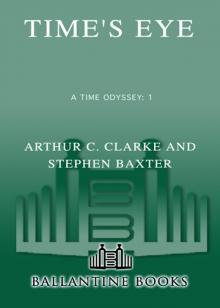 Time's Eye
Time's Eye The Sentinel
The Sentinel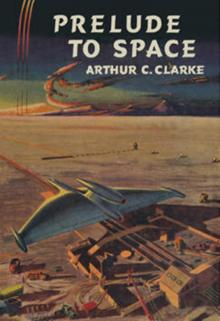 Prelude to Space
Prelude to Space Earthlight (Arthur C. Clarke Collection)
Earthlight (Arthur C. Clarke Collection) 2001: A Space Odyssey
2001: A Space Odyssey Against the Fall of Night
Against the Fall of Night Glide Path
Glide Path The Lost Worlds of 2001
The Lost Worlds of 2001 The Trigger
The Trigger Reach for Tomorrow
Reach for Tomorrow Islands in the Sky
Islands in the Sky The Songs of Distant Earth
The Songs of Distant Earth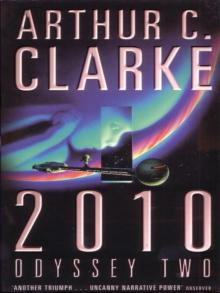 2010: Odyssey Two
2010: Odyssey Two Childhood's End
Childhood's End 3001: The Final Odyssey
3001: The Final Odyssey The Fountains of Paradise
The Fountains of Paradise Rama: The Omnibus
Rama: The Omnibus The Hammer of God
The Hammer of God Beyond the Fall of Night
Beyond the Fall of Night Tales From Planet Earth
Tales From Planet Earth 2061: Odyssey Three
2061: Odyssey Three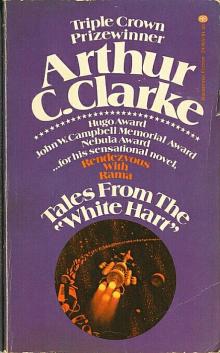 Tales From the White Hart
Tales From the White Hart The City and the Stars/The Sands of Mars
The City and the Stars/The Sands of Mars The Star
The Star Imperial Earth
Imperial Earth The Light of Other Days
The Light of Other Days Firstborn
Firstborn The Other Side of the Sky
The Other Side of the Sky Cradle
Cradle The Wind From the Sun
The Wind From the Sun The Ghost From the Grand Banks and the Deep Range
The Ghost From the Grand Banks and the Deep Range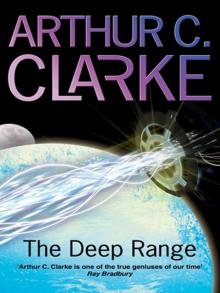 The Deep Range
The Deep Range Expedition to Earth
Expedition to Earth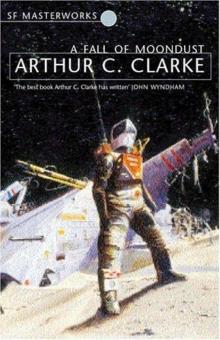 A Fall of Moondust
A Fall of Moondust Dolphin Island (Arthur C. Clarke Collection)
Dolphin Island (Arthur C. Clarke Collection) Richter 10
Richter 10 The City and the Stars
The City and the Stars Tales of Ten Worlds
Tales of Ten Worlds Dolphin Island
Dolphin Island Expedition to Earth (Arthur C. Clarke Collection: Short Stories)
Expedition to Earth (Arthur C. Clarke Collection: Short Stories) Sunstorm
Sunstorm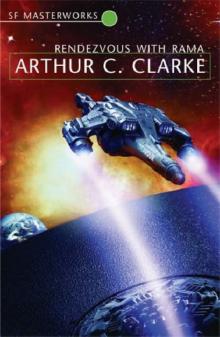 Rendezvous with Rama
Rendezvous with Rama The Collected Stories of Arthur C. Clarke
The Collected Stories of Arthur C. Clarke Trouble with the Natives
Trouble with the Natives Rama Revealed r-4
Rama Revealed r-4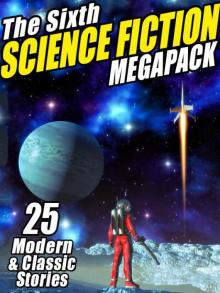 The Sixth Science Fiction Megapack
The Sixth Science Fiction Megapack Firstborn to-3
Firstborn to-3 The Ghost from the Grand Banks
The Ghost from the Grand Banks Into the Comet
Into the Comet The Fires Within
The Fires Within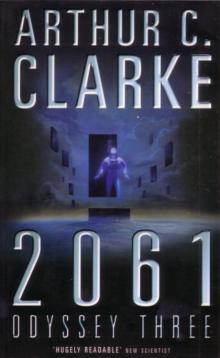 2061: Odyssey 3
2061: Odyssey 3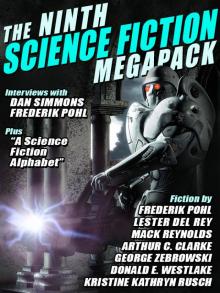 The Ninth Science Fiction Megapack
The Ninth Science Fiction Megapack The Coast of Coral
The Coast of Coral The Ghost from the Grand Banks (Arthur C. Clarke Collection)
The Ghost from the Grand Banks (Arthur C. Clarke Collection)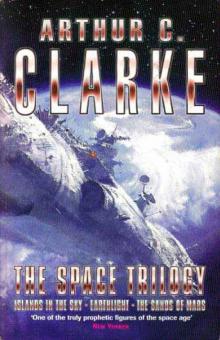 The Space Trilogy
The Space Trilogy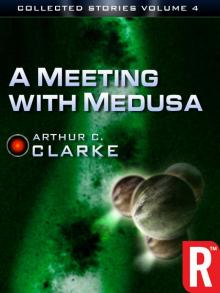 A Meeting With Medusa
A Meeting With Medusa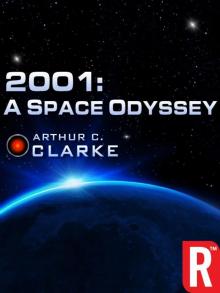 2001: A Space Odyssey (Arthur C. Clarke Collection: The Odyssey)
2001: A Space Odyssey (Arthur C. Clarke Collection: The Odyssey) Islands in the Sky (Arthur C. Clarke Collection)
Islands in the Sky (Arthur C. Clarke Collection)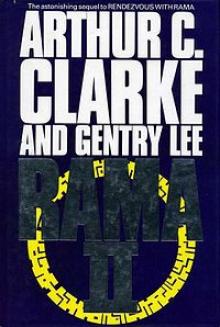 Rama II r-2
Rama II r-2 Glide Path (Arthur C. Clarke Collection)
Glide Path (Arthur C. Clarke Collection)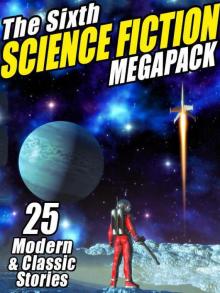 The Sixth Science Fiction Megapack: 25 Classic and Modern Science Fiction Stories
The Sixth Science Fiction Megapack: 25 Classic and Modern Science Fiction Stories Tales from the White Hart (Arthur C. Clarke Collection: Short Stories)
Tales from the White Hart (Arthur C. Clarke Collection: Short Stories) The Reluctant Orchid
The Reluctant Orchid